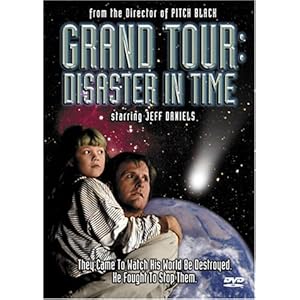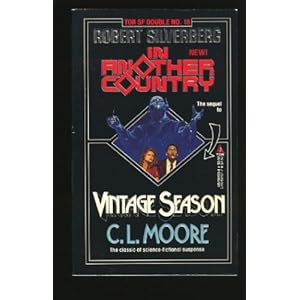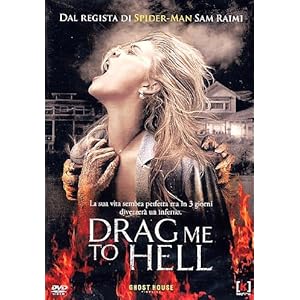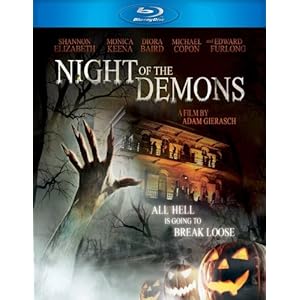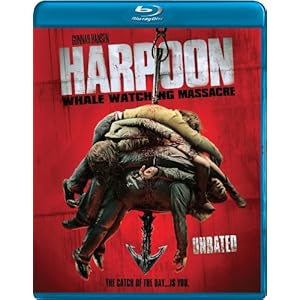By
Frank Menser and Nickolas Cook
Part I—
Chapter 1Chapter 2Chapter 3Chapter 4Chapter 5Chapter 6—
“Look at that,” Kiram said, as he watched the rioting on shore. The ship had arrived at the small town of Pera which was just across the straits men called The Golden Horn from Constantinople. “The soldiers are running amuck.”
“So that’s our port,” Ashta said.
“What’s left of it. The Sultan’s troops must have taken it, finally.”
“The Sultan isn’t going to have much of a town left, when the rioting stops. Look at those burning buildings.”
“One of the benefits of serving under Allah’s favored son,” Kiram said. “Mehmed will allow his irregular troops, the Bashi-Bazouks to loot for three days before he restores order. It will be even worse when the main city is taken.”
As the craft moored at an empty pier, several dozen rioters charged in their direction seeking whatever they could steal. Within seconds, the ‘would be pirates’ swarmed aboard the ship, and started to make off with the cargo. However, this proved to be a difficult task as the captain and crew grabbed their own weapons and attempted to expel the boarders. A virtual tug of war ensued over the wares stored on deck with the outnumbered crew taking the worst of it.
Ashta and Kiram watched the melee from the forecastle indifferently. The goods aboard were not theirs, so it wasn’t their fight. Only when some of the boarders attempted to attack them, did they respond with sword and club, cracking a few skulls before the sound of bugles made them pause.
“Here come the Janissaries,” Kiram said as he dropped the looter he was throttling. A column of soldiers with odd red caps marched down the pier and attacked the looters; beating them back with spear butts and the flat sides of their swords. Faced with this new threat the looters broke and ran, several being thrown overboard in the process. The officer in charge began to argue with the captain as his men collected the remaining cargo.
“By the prophet’s beard,” Kiram said as he grabbed his few belongings at headed for the gangplank, “”Did you hear what the captain said to that officer?”
“No, said Ashta as he followed.
“That cargo we have been travelling with is Naphtha.”
“Naphtha?”
“It’s an ingredient of Greek Fire. Friend, we have been sitting on a powder keg for the last few days. No wonder the captain was so tight lipped about it. He was intending to sell it to the Byzantines and didn’t count on Pera being overrun by Mehmed’s men. It is certain that all aboard will be arrested and executed.”
“Praise Allah,” the ancient Imam said as they passed. Ashta glared at him as he strode down the gangplank. Within seconds they disappeared into the crowded streets.
#
“Well this will have to do,” Ashta said, as he pulled a sleeping Muslim from his cot and booted him out the door of the small room they had commandeered at an inn facing the harbor. Kiram entered dragging with him a cringing Byzantine, who apparently was the owner of the inn. “This will be our room,” Kiram said jovially, “Keep all others from it or your head will decorate our window.”
The innkeeper nodded. Ashta looked at the man and growled. “He will no doubt rob us blind on the first opportunity.”
“Bring us wine, man.” Kiram said. Then noticing the innkeeper’s helpless stare he added, “Wine …and some food, the stuff you have been hiding from this rabble.” The Byzantine smiled nervously and then retreated from the room.
“I still don’t know how you are going to access the city,” Kiram said. “Close to a hundred thousand of Mehmed’s men have been trying to for weeks and they haven’t managed, and this Greek—”
“Giorgio Carrisone.”
“How will you find him in this melee? I fear if we enter Constantinople with the troops, his head will be all you find. There are many pikes here, and I think his skull might adorn one of them before too long.”
“Perhaps,” Ashta said, his gaze focused on the harbor. “But I dream each night of that gem the Berber stole. It haunts me. I must reach him before the city falls.”
Constantinople has been assaulted many times and still stands.”
In the distance, Ashta saw several galleys moored side by side. They supported a great chain the Byzantines had placed across the harbor to block the Sultan’s fleet. “Then the defenses might last till I find a way in.”
A vibrant roar shook the building. Ashta ducked, Kiram dove under the cot. “What was that?” the Turk cursed as the innkeeper entered with some wine and something that smelled like old goat cheese.
“That is the Basilica.” It fires about seven times each day.”
A cannon?”
“Yes, one Mehmed purchased from some Hungarian named Urban. I heard some of the soldiers talking about it. The cannon is longer than five men and hurls boulders weighing near six hundred pounds.”
“What are pounds?”
“A measure of weight some infidels use,” Kiram said as he emerged from under the cot, “About 272 kilograms.”
“By the—they can hurl such amounts? The walls won’t last long if they concentrate their fire.”
Ashta sat down on the cot and took the wine jug from the innkeeper. The wine tasted sour when he drank it, but he didn’t care. Ashta was beginning to learn that the world was a much larger place than he realized. What other wonders were out there? More importantly, how could he use them to his advantage?
Kiram handed him a chunk of cheese and sat on the other cot in the room. We have much to discuss, my friend. I will go amongst the troops when things are quieter. There will be booty that our gold will purchase cheap. I will find a warehouse where we can secure that for shipping later.”
“I think I shall go and see the battle. Perhaps there I will find a way to enter the city.”
“Just watch your head my friend,” Kiram said. “As tall as you are, you make a good target for the defenders.”
#
If it weren’t for the screams of the wounded and dying and the sound of weapons engaged in their grizzly tasks, Ashta felt he could be walking amidst a massive construction project rather than a war. The Muslim army—which engaged men from a score of races worked industriously at their tasks—each designed to pull down the walls before them and slaughter the infidels above them. Ashta saw sappers inspecting the walls in hopes of placing mines under a hail of arrows. Others were wheeling great machines towards the defenders in hopes of shattering those walls or providing platforms to be used when the main assault came.
The defenders were just as ambitious as their foes. Flights of arrows shot from the walls slew dozens. Cauldrons of boiling oils rained down on any who ventured too close. But it was the Greek fire that was the most devastating. Dropped in clay pots or sprayed by pressurized siphons on the attacking machines; it burned wood and men alike with impunity, stuck to clothing and skin, and water would not put the fire out. Only sand, salt, or urine seemed to retard the flames.
“Cursed be me, if I were to catch aflame and have to tolerate someone pissing on me,” Ashta cursed. “May Allah will that I be killed outright—rather than suffer that.”
Ashta ducked behind a canon as the soldier next to him fell with an arrow through his right eye, and bumped into its operator, knocking him off his feet. Ashta lifted him up and salaamed. An arrow glanced off the canon, landing at the Turk’s feet. He picked it up and examined it. “Foul weather you have here,” he said.
“The battle goes poorly,” the gunner replied. “These dogs fight like demons. They slay us like we were rats swarming below them. If you chose to venture here, best you, keep your head down and find a shield.”
“It’s a bitter price for what little you accomplish,” Ashta said.
“Aye, I have lost two assistants this day, and four the last eight days we’ve hammered these walls.”
“All that and not one breach?”
“I’ve been working on a soft spot near that gate over there. Rumor has it that Mehmed will keep us at it for at least a few days more. He is hoping to gain some kind of hole he can squeeze troops through.”
The gunner turned to the men near him. “Get another ball in there,” and ram that in solid. I don’t want a misfire.” The men scurried to their tasks under his watchful eye. The gunner turned to Ashta. “I am Banar, of our sultan’s artillery corps. He salaamed with a bold gesture and then flinched. An arrow lodged in his chain mail at the shoulder joint. “That’s the second one today,” he laughed. There’s one sour Greek up there that has been trying to slay me for three days. See there, he is shooting again.”
An arrow whisked by Ashta, barely missing the gunner. The portly man bit his thumb at the Greek and was rewarded by a stream of curses. Banar hefted a wine sack squirting a generous quantity down his throat. As he did, several more arrows flitted by with no effect. The gunner tossed the sack to Ashta. “The task grows dull here without some refreshment to clean out the smoke. I offer good wine for hard workers; would you care to be my new assistant?”
“I think the Prophet has better use for me elsewhere—despite the quality of your beverage.” Ashta turned and strode away from the gun..
Banar called out, “Remember to keep your head—”
Ashta looked back. The gunner lay dead across his cannon with an arrow lodged in the back of his neck.
#
The few days that Banar mentioned proved prophetic. On the twelfth day of bombardment a narrow breach was opened in the walls. Mehmed order a full assault and was humiliated as over 200 men laid their corpses in the breach without a single loss to the defenders. Then on the 20th, three Genoese ships accompanied by a Byzantine vessel brought fresh troops and supplies to the besieged city. The sultan’s fleet proved unable to stop them. The two setbacks were grumbled over in the wine shops of Pera.
#
“These Greeks are proving too costly for my liking,” a large one eyed Saudi said clutching his cup unsteadily. “I’m near out of loot to spend on wine and women. What good is the fight with naught to fill the empty hours between battles?”
“Paugh, you spend too much time in the rear to collect booty,” a Scythian said. “We are lucky the tavern keeper is so generous with his stock.”
The keeper, a short nervous looking man nodded as he passed, and then quickly ducked downstairs to get more wine from his casks. That his wife and daughter were being held by the drunken rabble may well have been the source of his generosity.
Ashta sat quietly in the corner listening. Strong drink had loosened many a tongue in the tavern. He knew such conversations could contain tidbits of useful information; or at the very least, an opportunity to relieve some drunken warrior of his coin.
The Scythian spoke again. “Indeed, what you say has merit though, Balzar. They must breed healthy rats in Constantinople. The way the Byzantines fight, they must feast well on them. Remind me to check the sewers to see if any fat ones come our way.”
The men laughed at his jest save one, whom Ashta recognized as the Imam who had been on the boat. “Mehmed, who is blessed by Allah, says to not use that name. It’s Istanbul—not Constantinople now.”
“Not till his banner flies above Saint Sophia’s pulpits, and last I looked, the only flags over the city were Byzantine.”
“And soon those very banners will choke the gutters you speak of.”
Ashta almost stood up in his chair. That’s it. The way into the city that would be least guarded would be the sewers! Ashta forced himself to conceal his excitement. Finally after weeks of waiting, he had the way to enter the city and find the man he was looking for. “Allah be praised for strong liquor and weak men,” he whispered as he left the tavern.
#
The waters of the Golden horn felt cold. Ashta shivered as he slipped out of the boat he and Kiram had commandeered. They had been lucky to this point; the small craft had managed to slip past the sentry boats and the great chain that blocked the harbor. Ashta—being dessert born was not a swimmer, so Kiram had tied a few wine skins together to create a makeshift float for him to cling to. Ashta placed some gold, dry clothing and a pry bar atop of it and—per Kiram’s advice—frog kicked his way towards the city, being careful to keep his legs underwater so to keep from splashing and making noise. Ashta imagined all kinds of perils lurking in the dark waters around him, waiting to drag him down into a watery hell. Though no such monsters appeared, it did little to relieve the Turk’s anxiety.
When he reached the city wall, Ashta worked his way along it till he found what he was looking for. Runoff formed a flat stream that trickled from a round metal grate that was blocking an opening in the wall slightly wider than a man. From the smell it was apparent that this was a sewer outlet. Ashta dashed up the beach and took the pry bar and began digging at the masonry around the iron bars. The water soaked stone broke easily. A few minutes work was rewarded by the grate suddenly breaking free. Before he could stop it, the heavy grate fell. Ashta froze in place and listened. Above him on the wall, two men were conversing in what sounded to him like Italian. While he did not speak the Roman tongue, he guessed from the sound of their voices that they had not heard him.
Ashta slung the bundle of clothing on his back and climbed inside the drain which tunneled into the wall for several yards. He crawled on his hands and knees till he saw an opening just ahead. Ashta raised himself up and looked through the opening …and stared right into the face of a guard
#
Giorgio Carrisione fingered his purse nervously, his eyes trying to avoid the bauble that hung from the neck of the Berber who stood before him. It was a simple copper amulet mounted on a chain. Nothing much to it at face value, he thought. But it was the stone that sat in it. Amber. It glowed with a golden orange heat that compelled him to forget his reserve and stare into its depths.
“This thing, it haunts me,” Balksid said. “I was told by a woman in Amasya, that you are a man who understands such magic’s.”
“It is true that though the mysteries of the Kabala and many other secret texts fill my library, I am but a student. Who was this woman?”
“She was dark, but not like me; and beautiful, as one who could steal the soul of any mortal she met. She asked me to keep it safe,” he said clutching the amulet by its cord. “She said fate and its master would come for it, but I must seek you out for it to happen.”
Giorgio shivered, despite his pretense of calm. There could only be one woman who could have sent the Berber to him. Unfortunately, that woman was a bitter enemy. Anyone this witch sent to him must have no purpose save his death. “Might I examine the bauble?”
The Berber tightened his grip on the amulet. “”Aye, you may, but it does not leave my neck.”
“So be it,” Giorgio said. “But before I do, might I offer you some warm wine? We are not down to eating rats here yet, but there are few places left in Constantinople that can offer a draught of this quality. Sit friend, and let us sup.”
The Greek walked over to a cabinet behind the Berber. The man’s eyes never left him. From its recesses he produced a wine jug and a mug. These the Greek placed in front of the Berber. “Pour your cup full, Balksid. I can get more.”
The Berber grunted and relaxed a little, as he picked up the wine jug. As he did the amulet’s chain suddenly tightened around his neck. Giorgio pulled hard till the Berber stopped kicking and his strangled corpse slumped in his chair. “Guards,” he yelled out the window to the soldiers passing below. “I have found a Turkish spy in my rooms.” He tossed a key down to the soldiers who ran for the door. “Make no haste, for I have slain him.”
Giorgio turned his attention back to his victim. He laughed as he removed the amulet from Balksid’s bruised neck. Fate and its master would be me, Nephilette. But I think that’s not what you intended. Oh, I know you witch, and the curse that you are.
#
Ashta stared up into the face of the Byzantine guard and then shrunk back in horror. The man’s dead bloated face was covered in sores. It was the plague. Ashta drew back from the opening. Allah preserve me from the unclean …Ashta shrank against the far wall of the drain and worked his way several yard further up. Rats scurried by, as he felt his way. Rats, Ashta knew, carried the disease. Several feet further on, Ashta found another opening and quickly crawled out onto a dark cobbled street. By good fortune no one was near. With no concern for modesty, Ashta disrobed and threw his soiled garments back into the sewer. Then he dressed in his clean clothing, thus assuming the appearance of a Slavic merchant. Ashta climbed up the side of the nearest building, found a dark corner and fell asleep.
#
The world looked strange; familiar—yet different in ways Ashta could not fathom. In the sky there were no birds and the grass beneath his feet felt somehow coarser than what he knew. There were trees; pines, but not the pines of his Mediterranean home. The air smelled sweet. Ashta walked along a narrow road till he saw a tower. It was tall and looked almost like it was made of black glass. From a window in that tower shone a light of red amber. Ashta felt drawn to that light though his senses warned him that to embrace who ever held it was to embrace death.
#
On the seventh of May 1453, Mehmed finally attacked the city walls with 25,000 troops. For more than three hours he hammered the defenders before his warriors were driven off. Several times in the following weeks the silence of the city was shattered by the sounds of combat, the screams of the wounded and dying, the bustle of not only men machines but also the carnal house cries of the makeshift medical shelters for the injured and the lamentations of those whose loved one fell defending the city. The air grew thick with the smell of mass funeral pyres as the number of fallen grew too large for more ceremonial burials.
#
Ashta—now Jussack the Slav, rose from his cramped hiding place. It was well into the day. He shook off the stiffness and then lowered himself to the street.
For the next several days he walked the streets and marketplaces trying to locate the Greek, Giorgio Carrisione. He coordinated his search from a room he had found close to Saint Sophia, the great cathedral of Constantinople; the easiest landmark for him to remember. From there he worked each neighborhood in a roughly circular pattern, listening in the shops and markets for any word that might point him in the right direction. After a couple weeks, the search proved fruitless. Ashta began to feel frustrated.
#
“…and, as he said to me, the fiend jumped him as he lay asleep, wielding a large dagger. By our patron saint, he was lucky as the first blow missed. He was able to block the next with a pillow.”
The children crowded around the ancient, who sat on the stone steps of the Acropolis in the afternoon sun. They reveled in the story he told: tugging at his sleeves in excitement. Then as he neared the climax of his tale, a tall man approached and saluted him. A few of the children scowled at the stranger for interrupting the story, one gestured for him to sit down. Only the old man seemed to not notice the man before him.
“Then, the Greek, Giorgio Carrisione—I believe his name to be. Seized the devil and throttled him to death—” his words were cut short by a firm hand which grasped him hard by the shoulder. A face with long drooping red mustaches stared at him from just inches away.
“Did you speak the name, Giorgio Carrisione?”
“Uh, yes …”
“And where was this fight you mentioned?”
“Why Sir, it was in his home they say. I believe it to be a tavern that overlooks the Harbor of Theodosius,” the old man said.
“Can you take me there?” Ashta pulled the purse from his belt and shook it so the remaining coin he had within jingled. “I have business with this Greek, and I have sought long to buy the wares he holds for me.”
“Sadly,” the ancient said as he struggled to his feet, “my old bones will not ferry me well this day—for they protest—as old peoples oft do. But this boy,” he said pointing at a curly haired youngster, “knows the way and will cost you less for the trip.”
“I thank you for your kindness and wisdom, old man.” Ashta placed a gold sovereign in his hand. Then following the boy’s lead, he took off to find the elusive Greek.
#
The ancient watched the tall stranger leave with the boy. As he did, the years seemed to melt from him so that within seconds, he appeared to be a much younger man. The children stared at him in amazement, several crossing themselves.
“Here now, have you not heard of magic?” He smiled and produced a napkin containing sweetmeats from his pocket—tossing it on the ground before him. As the children scrambled for the treats, Giorgio Carrisione disappeared into the crowd.
#
The boy led Ashta down the dusty streets towards the south. In the distance he could hear the sound of fighting to the east at the military gates. Ashta was not so sure that the prediction of his friend Kiram, that the city would survive the siege was that accurate. The defenders he passed looked tired and some of the people had taken to gathering in or near the churches as if proximity to the edifices might save them from what seemed more and more like an inevitable doom. There was no time to waste. If the city fell before he found the Greek, he might miss the only opportunity to catch up with the Berber and retrieve his amulet. Ashta hurried his steps towards the Harbor.
Suddenly the boy leading him stopped and pointed at a well kept building overlooking the sea. “There Sire, the second window above the door is where the man lives.”
Ashta tossed the boy a coin and strode over to the building which looked like an inn. As he reached for the door, a pair of men rushed up behind him. Before he could turn, something struck him on the head and all went black.
--End installment of The Eye of Time--
(For links to all previous chapters in order of appearance, please see above this newest installment.)



















